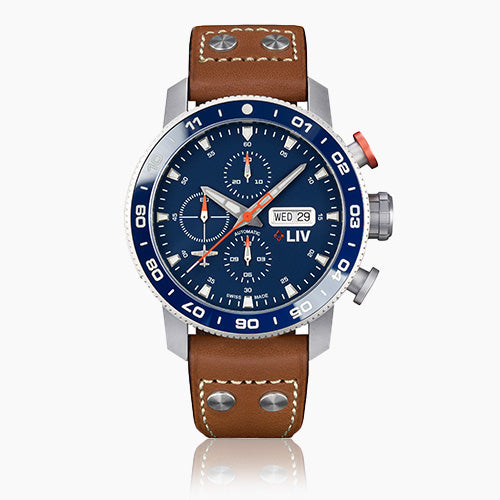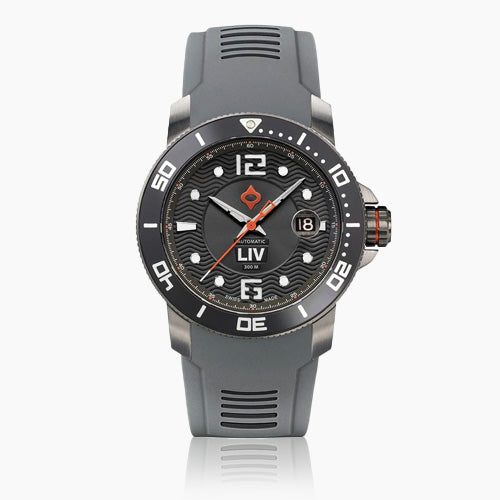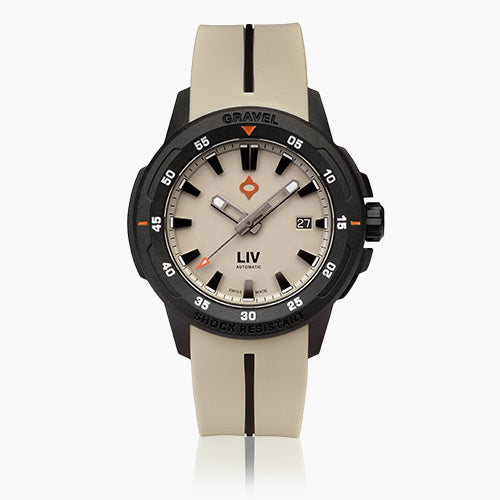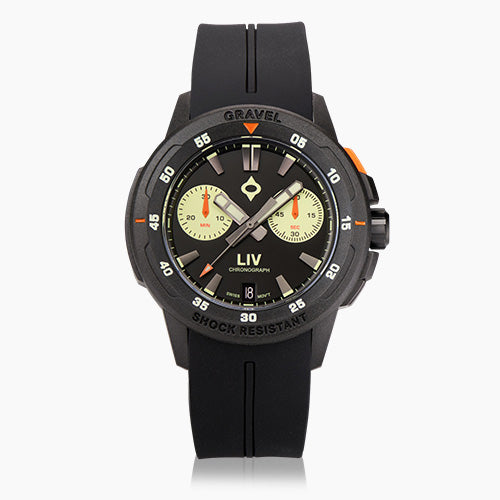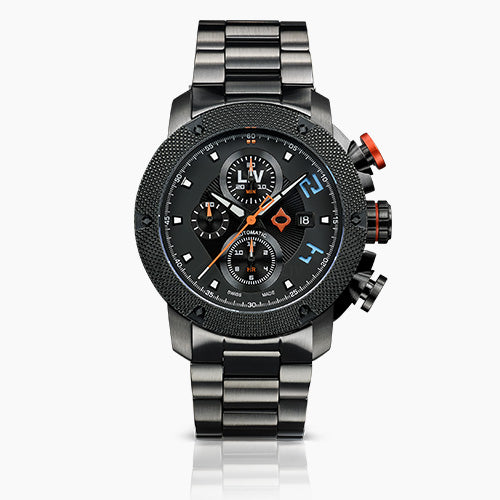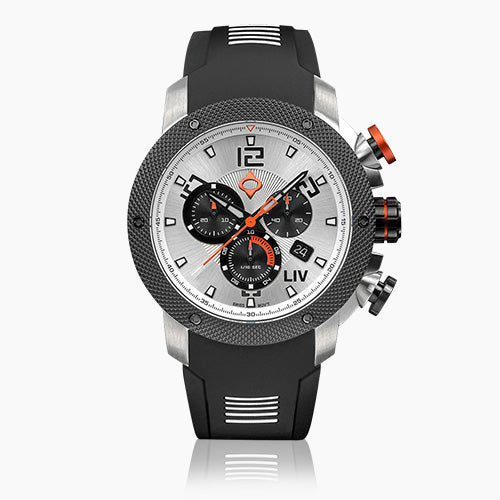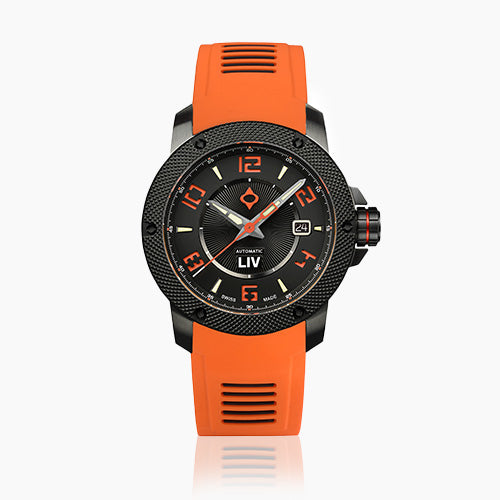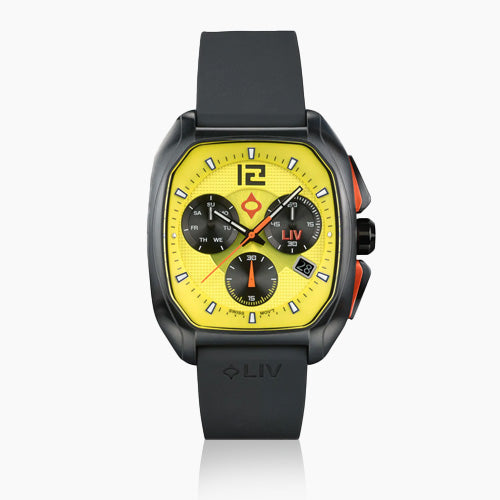
Sellita versus ETA and the rise of the underdog
Share
JOUSTING WITH GIANTS
LIV Watches celebrates people, fans, watch freaks, and companies who rattle the cages of the giants and challenge the status quo. After all, that is exactly what we did when we introduced our direct-to-consumer, boutique brand alternative to the traditional watch companies and their bloated, disconnected distribution channels.
The Swiss watch movement maker, Sellita, embodies this spirit as we see it. They took on the heavyweights of the industry and have flourished. As a result, we feel a kinship with the company, you might even term it a symbiotic relationship. So, if you want to learn more about the company that dared to joust with giants, read on.

The GX1-A was the first LIV watch to feature a Sellita movement.
THE EARLY STORY OF STELLITA
Sellita was founded in 1950 in La Chaux-de-Fonds, Switzerland. The company served as a major out-sourced assembler for the giant, ETA. ETA would send partially assembled movements to Sellita, where that company completed the assembly, producing a finished movement. If required, Sellita also enhanced the movements aesthetically and functionally, as requested by ETA.
Sellita focused on the ETA 2824, an automatic movement with a date display. These movements were branded as ETA 2824-2 and were sold to other watchmakers to power their timepieces.

It may seem odd that ETA would outsource such a critical step in the manufacturing process. However, it was the practice in the Swiss watch industry to distribute manufacturing and assembly of various movement components to third-party providers. This allowed companies to focus on one aspect of the watch movement and maximize quality and manufacturing efficiency. It was this practice that will lead to the dominance of the watch industry by the Swiss in the late 1800s.
Things began to change in the relationship when the Swatch Group purchased ETA in the late 1990s. The Swatch Group owned many prestigious watch companies and soon ETA was dedicated to supplying the majority of their production to Swatch companies.
A WATERSHED MOMENT
In 2003, ETA made the decision to stop outsourcing their movement assembly. This move threatened to ruin Sellita, so they decided to begin designing, manufacturing, and selling their own movements.
Fortunately for the company, they had intimate knowledge of the ETA 2824, and possessed the cutting edge equipment, manufacturing capabilities, and know-how to create and sell their own movements.

ENTERING THE FRAY
Sellita's first salvo came with the introduction of their SW200, an almost identical movement to the ETA 2824-2. This shouldn't come as a surprise, given their decades of history working with this movement for ETA. All the technical specifications are essentially identical with one exception, the SW200 boasts 26 jewels to the 25 in the 2824-2.The Swatch Group increasingly diverted ETA movements away from non-Swatch companies until on 31 December 2019, all sales of movements to non-Swatch companies stopped.

During the intervening years, Sellita developed and introduced a wider range of movements, listed below.
⦁ SW 200/215/400 (based on ETA 2824-2 and ETA 2836-2)
⦁ SW 300/1000 (based on ETA 2892-2)
⦁ SW 500/510/600 (based on Valjoux 7750 a.k.a. ETA 7750)
"Because of their well-earned reputation for quality, precision, and reliability, today, Sellita is one of the largest Swiss movement manufacturers, producing over 1,000,000 movements per year. At LIV, we feel confident in Sellita as a manufacturing powerhouse and its ability to innovate in the space."
- Esti Chazanow
Co-Founder at LIV Watches
HOW GOOD ARE STELLITA MOVEMENTS?
There's an old saying that goes, "You are known by the company you keep." Well, for Sellita, they keep very fine company indeed. The quality of a Sellita movement is so high, luxury watch brands including Hublot, IWC, Oris, Raymond Weil, Sinn, and Tag Heuer use them in their watches. And of course, boutique brand, LV Watches.
As you might suspect, with the supply of ETA movements ending on 31 December 2019, once LIV's inventories of timepieces powered by ETA movements are gone, they are gone for good.

WHAT DOES THIS MEAN FOR LIV?
So what does all this mean for LIV and other watch companies? It is a safe bet to say, watch collectors, fans, and freaks everywhere will never miss a beat (pun intended - bph, get it?) with a premium Sellita movement driving their LIV masterpiece's display of time.
In head-to-head competition, Sellita movements match ETA movements in every respect and exceed them in some.
So, join us in celebrating the rise of Sellita; the underdog who took on the giant and won. Sounds like LIV, doesn't it?

